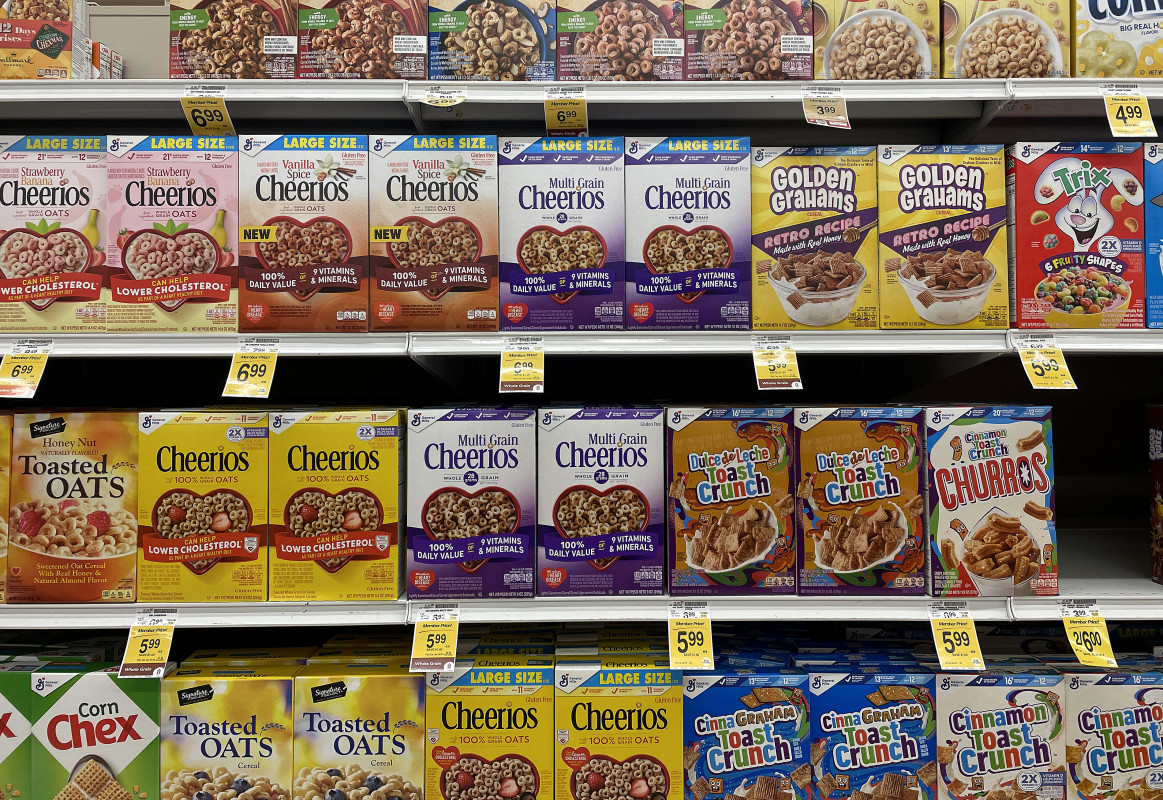
For millions of Americans, cereal is a delicious (and debatably nutritious) way to start the day.
It's been that way for decades, since cereal was popularized in the mid-1860s by the operator of a sanitarium in New York. It's a wild story, and one worth looking into if you aren't familiar with the history.
Related: KitchenAid unveils new luxury appliance coffee drinkers will love
Since then, cereal has had a relatively uncomplicated rise to popularity. Young children, college students, parents and celebrities enjoy it more or less guilt-free at all times of the day, though it's most commonly thought of and referred to as breakfast.
It's many an athlete's dream to end up on the front of a Wheaties box, and most of us remember begging our mothers for the most brightly colored and sugar-laden box on the lower shelf (cleverly placed at eye level for most 4- to 10-year-olds) when we were younger.
Cereal has become more expensive
But in recent months cereal has come under fire. The once affordable snack or meal has gotten significantly more expensive as food prices broadly have risen.
Analysts estimate that cereal costs have gone up 10% to 15% from a year earlier, depending on the brand and quantity measured. And it's not uncommon to see standard-sized boxes of some cereal brands selling for $10 or more, depending on where you are in the country.
This is partly why Kellogg's (KLG) Chief Executive Gary Pilnick came under fire in late February after telling Americans to buy more cereal.
“The cereal category has always been quite affordable, and it tends to be a great destination when consumers are under pressure,” Pilnick told CNBC in an interview. “If you think about the cost of cereal for a family versus what they might otherwise do, that’s going to be much more affordable.”
When asked by "Squawk on the Street" host Carl Quintanilla whether that statement might land wrong, Pilnick doubled down.
“In fact, it’s landing really well right now," Pilnick continied. "Cereal for dinner is something that is probably more on trend now, and we would expect [it] to continue as that consumer is under pressure.”
General Mills faces legal action for allegedly harmful ingredient
Kellogg's isn't the only cereal brand that's come under scrutiny in recent weeks, though.
General Mills (GIS) is the target of a lawsuit that alleges some of its favorite oat-based cereals contain a potentially harmful ingredient.

According to the lawsuit, filed in U.S. District Court for the Southern District of California, some General Mills cereals, including Cheerios, contain chlormequat chloride, a pesticide linked to cancer and birth defects.
The lawsuit, which seeks class-action status, claims that independent studies have confirmed the presence of chlormequat chloride in several cereals, including:
- Cheerios
- Honey Nut Cheerios
- Frosted Cheerios
- Oat Crunch Oats N’ Honey Cheerios
It alleges the cereals contain levels of chlormequat chloride ranging from 40 to more than 100 parts per billion.
Quaker Oats, another oat-based cereal, is the subject of a similar lawsuit, which alleges it contains “dangerously high” levels of the pesticide.
The Environmental Working Group recommends that humans be exposed to no more than 30 parts per billion of chlormequat per day.
“The levels of chlormequat found in Cheerios far exceeds this recommended threshold amount,” the lawsuit says.
“[N]o reasonable consumer would ever expect that a food product — especially one heavily marketed to children and families — would contain dangerous pesticides,” the filing says. “Plaintiffs and Class Members have suffered economic injuries as a result of purchasing the Products.”
TheStreet has reached out to General Mills, the Minneapolis foods giant, for comment.







